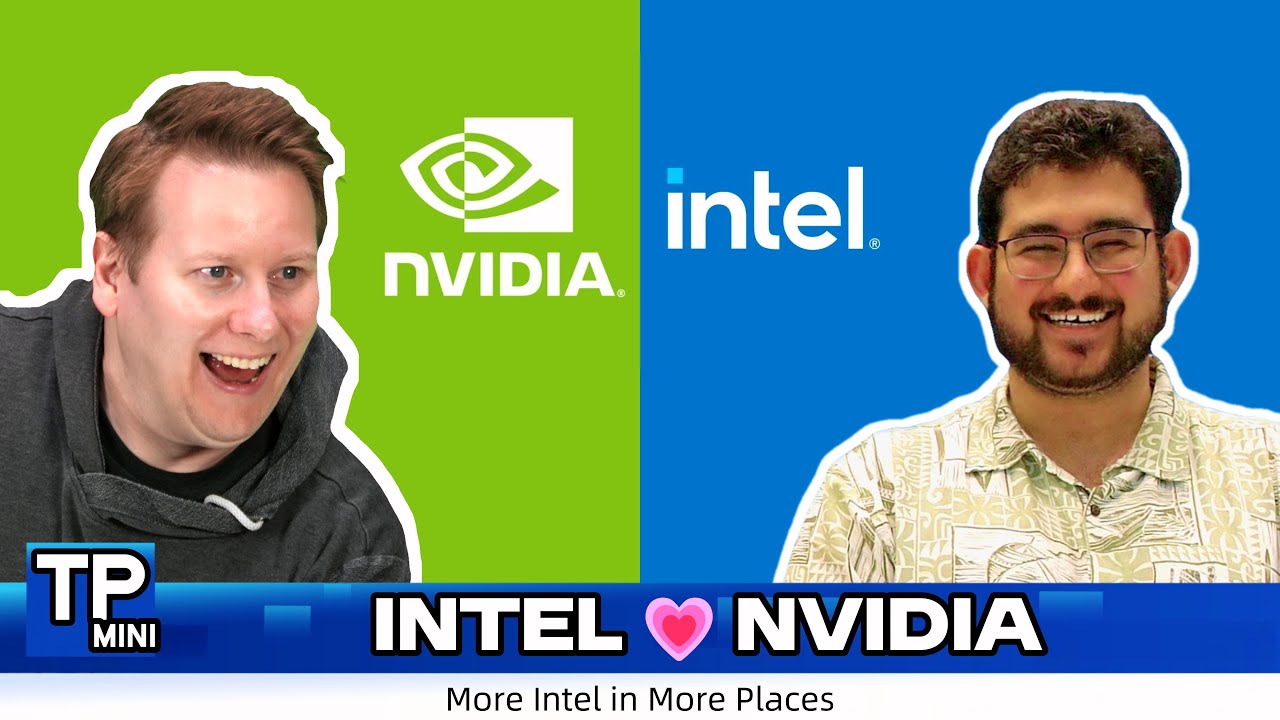The video covers the unexpected collaboration between Intel and Nvidia to combine Intel’s x86 chiplets with Nvidia’s RTX graphics, alongside Nvidia’s 4.9% investment in Intel, aiming to create competitive consumer and enterprise chips that challenge existing high-performance computing solutions. It also explores the strategic implications for the semiconductor industry, including impacts on competitors like AMD, MediaTek, and ARM, while highlighting the potential benefits and challenges of integrating their technologies.
The video discusses a surprising collaboration announcement between Intel and Nvidia, which caught many in the tech industry off guard. The partnership involves working together on consumer and enterprise chips, combining Intel’s x86 chiplets with Nvidia’s RTX graphics chiplets. This collaboration could lead to new products that compete with existing high-performance computing solutions, such as DGX Spark systems. Additionally, Nvidia is making a significant investment in Intel by purchasing a 4.9% stake, potentially becoming the third-largest shareholder and possibly gaining a seat on Intel’s board.
On the consumer side, the collaboration could result in Intel-based CPUs integrated with Nvidia GPUs, potentially putting pressure on Intel’s own ARC graphics division and MediaTek’s existing partnership with Nvidia. The discussion highlights the complexity of such collaborations, including challenges in integrating IP from different companies and the strategic implications for both Intel and Nvidia. The partnership may allow Nvidia to leverage Intel’s strong OEM presence in the CPU market, especially for laptops, while Intel benefits from Nvidia’s leading GPU technology.
In the enterprise space, the collaboration focuses on building custom x86 CPUs combined with Nvidia’s NVLink technology, which is designed for high-bandwidth interconnects between processors and GPUs. This could provide an alternative to Nvidia’s current ARM-based Grace CPUs, offering customers more options for high-performance computing platforms. The announcement also raises questions about the future of NVLink and Intel’s involvement in related industry councils, with speculation about how Nvidia’s increased influence at Intel might affect these dynamics.
The video also touches on the broader industry impact, particularly on competitors like AMD, MediaTek, and ARM. While AMD is expected to respond positively, emphasizing the benefits of a robust ecosystem, the collaboration could challenge ARM’s market share, especially in the consumer and server markets. MediaTek appears to be the biggest loser in this scenario, as Nvidia may shift focus away from its ARM-based partnerships toward Intel’s x86 platform. The discussion also notes the potential for this partnership to reinvigorate the desktop market by introducing a new player combining Intel CPUs with Nvidia GPUs.
Finally, the hosts address various audience questions about technical and strategic aspects of the collaboration, such as the possibility of mixing ARM and x86 chiplets, the impact on other projects, and the likelihood of Nvidia acquiring Intel. They conclude that while the announcement is still high-level with many unanswered questions, it represents a significant shift in the semiconductor industry. The video encourages viewers to follow upcoming press conferences for more details and to stay tuned for further analysis as the partnership develops.
